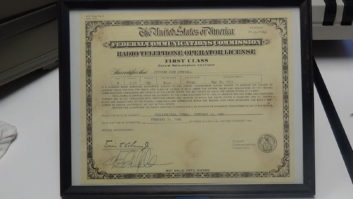
TRANSLATORS
Well-done piece (“AM Translators: What’s Next?” ebook). Very open and without bias.
My concern is that moving AM aural service to FM — 2,035 translators assigned — seems a slimy kind of “AM revitalization.” It’s not a flat landscape for all AMers to obtain translators. While no one in the broadcast world appeared to like the views of Tom Wheeler, he brought up a point about not giving away free spectrum. Oddly, he seemed to be the only objector.
It’s amusing when the FCC uses the phrase “serving the public.” Commercial radio broadcasters are “for-profit” operations; with zero listeners and zero revenue, they have zero value and no way to continue. No subsidies, no handouts — just flat zero income; no one is going to fund them without ROI. So does addition of an FM translator to an AM band operator just continue the death by a thousand cuts?
A translator is 250 watts today. I predict we’ll hear complaints that their coverage is poor and they need more power. Once that door is opened, it won’t be closed. Full-power operators need to watch for complaints and a possible power increase; 2,035 AM licensees can apply a lot of pressure to Congress.
One suggestion is to narrow deviation on the FM band, drop IBOC and repack the FM dial to make space; and clear off (shut down!) all signals under 10 kW from the AM band. Manmade noise is going to make AM reception increasingly difficult. I can’t see expanded FM band or digital AM taking off; receiver migration would not happen.
Smartphones rule. Any change now is too late for consumers to adopt new receiver equipment. So the repack could be the only game in town.
Last I looked, more than 581 comments had been filed on the FCC website about AM revitalization. In my RV travels, I noted 115 AM channels; but sometimes at night you will be able to receive only four signals; in metro areas, that may rise to 12. AM night reception is a sea of noise with few listenable signals. A power increase is not the answer. It would become mutual annihilation. Comments printed out from the FCC AM Revitalization R&O would be the size of an urban telephone book!
James O’Neal has quoted Henry Bellow, one of the first Federal Radio Commission members, from 1927: “A broadcasting station is in many ways akin to a newspaper, but with this fundamental difference: There is no arbitrary limit to the number of different newspapers which may be published, whereas there is a definite limit, and a very low one, to the number of broadcast station which can operate simultaneously within the entire length and breadth or our county. This limit has not only been reached; it has been far overpassed; the demand from every section of the country is to cut down the number of broadcasting stations in the interest of the listening public.”
These words are from 90 years ago! All the FCC needs is a mirror for AM revitalization.
Warren Shulz
Retired broadcast engineer
Life member IEEE, SBE, AES
DOWNLINK MAP ERROR
I found your article (“Mid-band Spectrum Talk Worries Broadcasters,” RadioWorld.com) a very interesting read.

But I note that our network, Boise State Public Radio in Boise, Idaho, is not indicated on the map. We have 18 stations, nine full-power and nine translators, a pretty big network. And most all of it is fed by our C-Band downlink in Boise, which isn’t shown.
I have notified the PRSS folks about this error on their map.
Richard Strack, CSTE
Chief Engineer
Boise State Public Radio
Boise, Idaho











